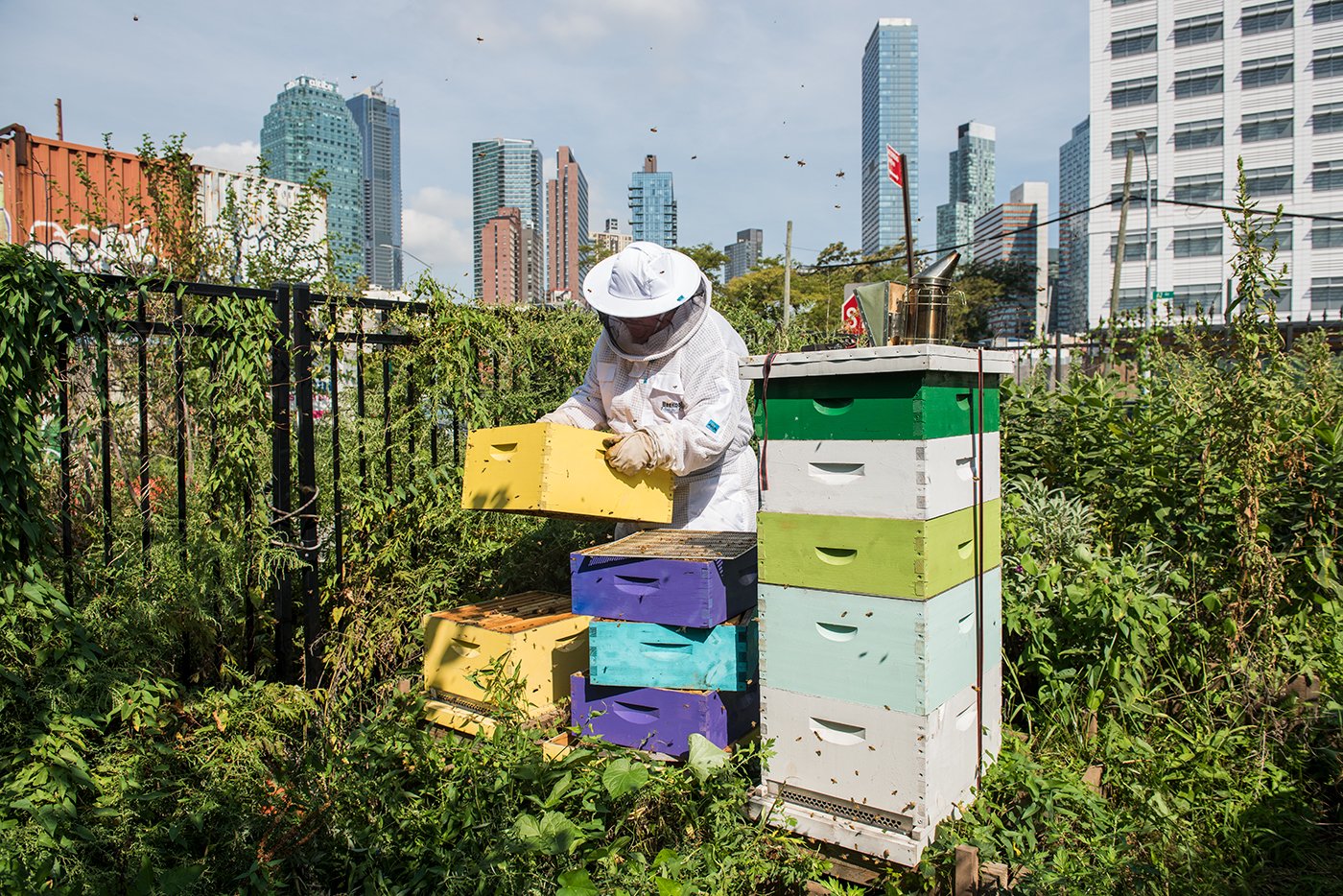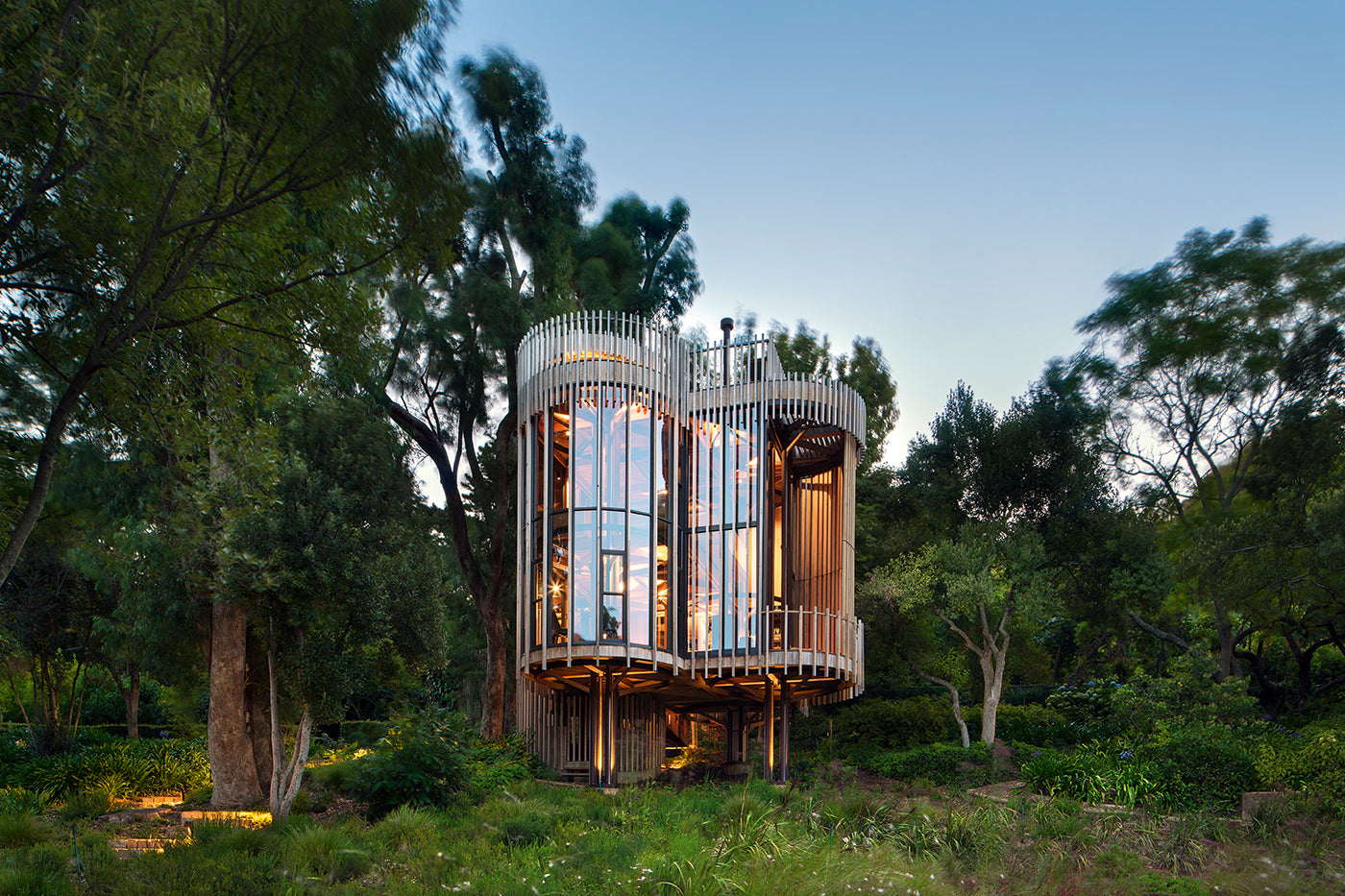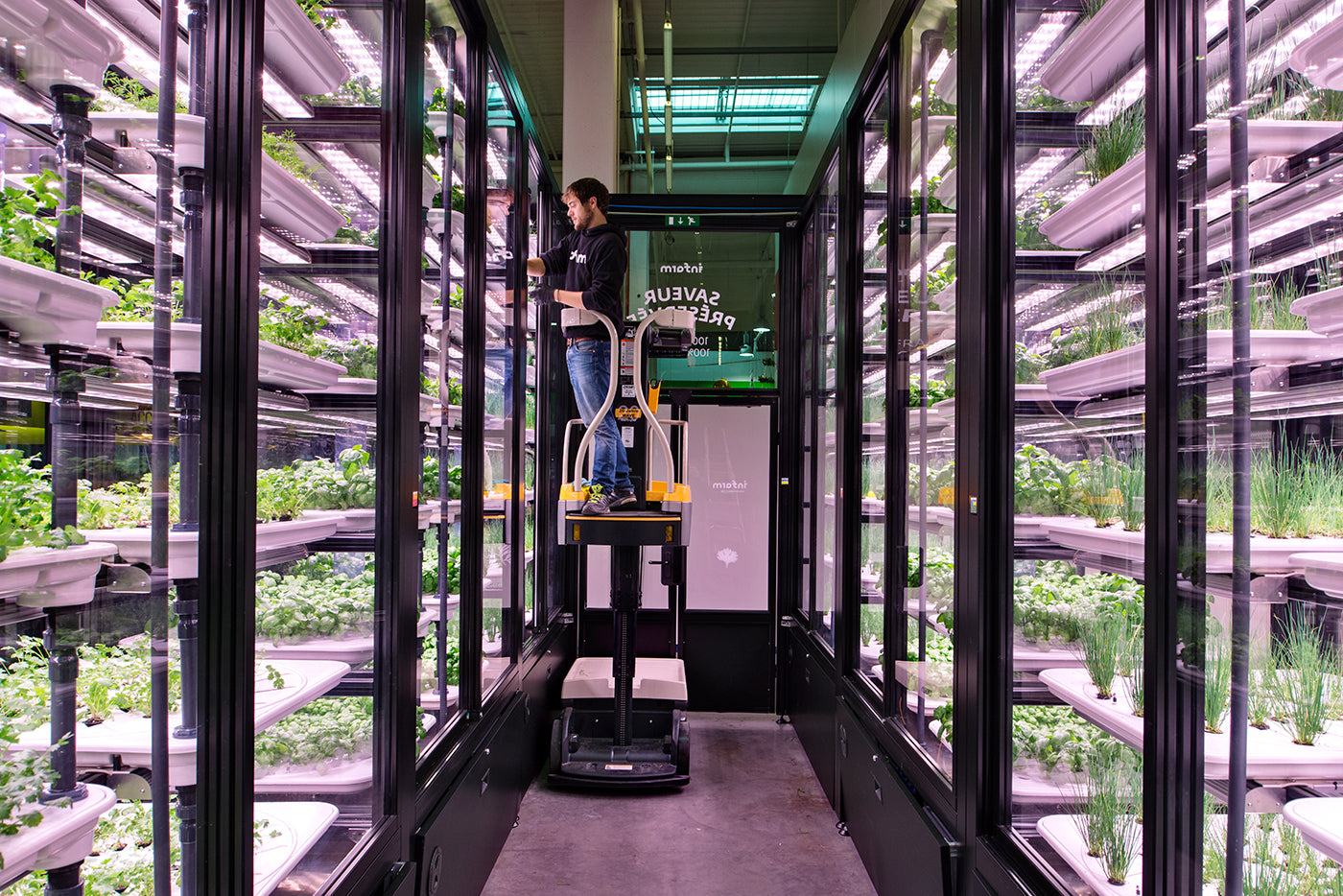
Urban Farmers: The New Crop of Growers
Behind the now and how of growing food in the city
“Although urban agriculture is nothing new, a decade ago it was more underground, but today cities everywhere are adopting new practices,” explains co-editor and photographer Valery Rizzo of Urban Farming. As the effects of climate change become ever-more present and rebuilding biodiversity becomes a focus, Rizzo understands why this movement has evolved into a mainstream branch of city life. Alongside journalist Mónica R Goya, the creative duo explore contemporary urban agriculture and its global community for our eagerly anticipated release. City-dwellers have been longing for a connection to nature and more culturally diverse foods, with this demand only being heightened during the pandemic. To explain this rise and how they crafted their knowledge into a book, we speak to both Rizzo and Goya.
The release of Urban Farmers feels very timely with movements currently taking shape across the world.
Goya: In my opinion, what has changed is that there is more interest in what goes into producing food and how those who grow the food for us are treated. Also, I think more people are wondering about food justice issues like why in certain neighborhoods–especially in the US-access to healthy, fresh food is extremely limited. Moreover, there is more environmental awareness in general. For instance, if you look at statistics, the UK’s organic food market has been increasing steadily since the Great Recession of 2007, above 4% in 2019 alone. Additionally, at a different level, I also think that for many urbanites growing food in cities is a way to connect with nature and the many rewards-physical and emotional-that it provides.

With three locations atop industrial buildings in New York City, Brooklyn Grange has created a revolutionary rooftop farming model. Photographer Valery Rizzo traveled to many of the American and French-based growing sites for the book, including this one. (Photo: Valery Rizzo, Urban Farmers)
In the introduction, you write: "The concrete jungles of modern cities might seem hostile to nature, but they are full of natural life. And more often than not, it is in our cities that children first get acquainted with the outside world." How is the farming education of the youth in urban areas affecting both the people and the planet?
Rizzo: Educating kids about urban farming, where their food comes from, and how to grow it is beneficial to their physical and mental well-being as well as their futures. I’m sure that experience must influence who they become as people and encourage them to engage with and care more about planet and their nutrition. They may even choose careers in farming or science and become an influence to other family members.
Goya: From my perspective, it is a delight to see that the younger generation has a strong drive to advocate for sustainability and to have their voices heard, committed to organizing together toward seeing real change. I hope their efforts will materialize in further environmental policy progress at the global level. On the other hand, I was highly impressed by Meredith Hill (one of the profiles included in the book) and her teaching approach. First, when I was researching her story for the interview, and later during our conversations, I couldn’t help but wish that I had had a teacher like her when I was at school!
You also ask: "Why shouldn’t our cities become wildlife corridors and refuges for biodiversity?" If urban areas are to produce 15-20% of the world's food supply, what changes do you expect to see in the next generation?
Goya: Maybe it’s because of the lockdown, but it looks like citizens, in general, are craving more green spaces. Also, looking at the increasing demand for allotments in cities like London or Berlin, people seem to be more willing to get involved and get their hands dirty. Furthermore, more and more people are joining forces to fight for a fairer food system and to improve access to healthy foods at a local level. On the other hand, new urban farming start-ups have been flourishing across the world. For all these reasons, local authorities will hopefully work hard to meet that demand, making cities healthier, more liveable spaces in the process. Looking at the stunning urban farming revolution taking place in a densely populated city like Paris (particularly through the Parisculteurs program, which aims to boost urban farming by identifying vacant urban spaces where food could be grown and then establishing partnerships between landowners, farmers, gardeners, etc. to make it happen), I don’t see why others shouldn’t follow a similar approach.

At New York's Edgemere Farm in the Far Rockaways, one of the resident growers Lightbourne Gibson “Lighty” holding harvested Purple Top Turnips. (Photo: Valery Rizzo, Urban Farmers)
What was the selection process for each urban farm? What does the combination of farms together show about the contemporary life of both farmers and their gardens?
Rizzo: When selecting the farms and agricultural projects (because they are not all farms, some are vineyards, some food forests, beekeepers, homesteads, community gardens, etc.) I was looking for something about each one that was unique to the others, whether that was their farming methods, the crops they specialized in, their locations, or the reasons they farmed or grew. Some of the projects were people and places I had already been familiar with photographing, while others were new discoveries. I wanted the selection to show the diversity and wealth of people growing in urban environments in different parts of the world and the various reasons for doing so.
The wealth of diversity and creativity of the farmers is beautifully on show through the photography. Were there any stories or farms that particularly connected with you? Or anything behind-the-scenes that didn't make it into the book?
Rizzo: I’ll never forget the day I photographed at Edgemere Farm in the Far Rockaways, I had never tried Callaloo before, I had also seen it while photographing at East New York Farms for the first time. A Jamaican grower at the farm, Lightbourne aka “Lighty” told me exactly how to sauté it with onions and tomatoes and then proceeded to prepare some harvested stalks of Callaloo for me, chopping it into pieces and handing it to me, ready to cook, in a brown paper bag. With that, he also gave me a fresh bottle of Sorrel drink he had just made with ginger and hibiscus from the farm. The drink was amazing and just made you feel good. I also loved how a woman from the neighborhood stopped by with a basket to ask for some fresh eggs from the coop and a sign at their farm stand that read: “We have fresh arugula & lettuce in the fridge, just ask.” I was also impressed with farmer Lindsay Allen from Higher Ground Farm at the Boston Medical Center and their initiative to feed people. The farm’s location was chosen because it faces the medical center where the patients can look out onto the farm. On a more personal note, Lindsay created a Garden & Seed, Give & Take in front of her home in Sommerville, Massachusetts, which encourages people in the community to grow their own food. It was beautiful to see what she created along with her impressive home garden which she shares with her housemates.

Adam DeMartino (left) and Andrew Carter (right) are the co-founders of Smallhold, here they are seen standing inside their Brooklyn Farm holding some of holding some of their mushrooms. (Photo: Valery Rizzo, Urban Farmers)
The pace at which technology is transforming urban farming is truly staggering. When photographing or researching certain farms, were you ever surprised by the levels of sophistication?
Rizzo: Smallholds automated mini-farms installed in restaurants, hotels, and grocery stores are pretty impressive and at times futuristic in their design and technology. They use a proprietary technology of hardware and software called farmLine that they developed themselves. The system allows the units to be automated and connected to a server, which lets them access the units from any laptop, anywhere. This was my first time I shot a farm-to-table mushroom harvest from a controlled-environment mini-farm unit installed above the bar of The Standard Hotel’s, Café Standard, where the mushrooms were then brought directly into the kitchen to be used for a dish on the cafe's lunch menu. InFarm in Germany does something similar with their own patented technologies, growing greens and herbs hydroponically on a larger scale using controlled vertical indoor farming units installed in supermarkets which they are expanding worldwide.
Goya: Yes! As a writer, I was amazed by how fast things are evolving. I visited Growing Underground in London while reporting on a story years ago and the experience was unreal. While writing the book I have been very impressed with other ventures like Smallhold or Farm. One in the US. One of the reasons why many of these futuristic-looking urban farms only grow quick turnaround crops like microgreens is the current cost of energy. However, if the latter decreases in the future, the palette of crops they might grow and the level of sophistication they might achieve to do so might change considerably too.

Urban growing is about utilizing the space, whether an expansive surface on a roof or the windowsill. Here we see beekeeper Geraldine Simonis moving her Thai basil plant onto her New York fire escape garden. (Photo: Valery Rizzo, Urban Farmers)
When looking at the finished book, it is both beautifully written and photographed. What was it like putting together this book? What do you hope readers get from it?
Rizzo: Thank you! We had to produce this book during a pandemic which presented its challenges but also made the subject matter very timely. Since I could not travel far, as most of the world was shut down, I was grateful to be able to co-edit this body of work with the talented team at gestalten. Some of the photography was existing work as I had already been working on photographing urban agriculture globally before my proposal, so I was excited about traveling a bit but soon realized I had to focus on New York City. I was thrilled however that we were able to publish the remainder of the photography of different parts of the world from other agricultural photographers which I greatly admire. I made the suggestion of my friend and journalist Mónica R Goya who brilliantly wrote the book—no one could have written this book but her. I thought it beneficial that while I was in the United States, Mónica, originally from Spain, was based in the UK and spoke French as well. The farms and people that I photographed and spoke to in the book were so generous with their time and I loved how they were equally excited about the creation of a book that could show them what was being done in cities all over the world. I hope that readers are inspired by what they see and read and are given a better understanding of the diversity of urban agriculture and gain the same appreciation and respect that I have for the people who grow and build and teach and advocate for a healthier and just world. Perhaps they might want to get involved themselves.
Goya: Thanks! From the writing side of things, it was an absolute dream to work on this project and with such a brilliant team, from Valery, whose photography I have long admired and who initially got me involved in the project, to the bright editors who supported us through the process. I have been interested in urban agriculture for a long time and this was a unique opportunity to gain a global overview of it while adding new layers of meaning to the previous knowledge I had. Having a chance to interview such a bright and diverse bunch of farmers, activists, food justice advocates, and others, all of them making real change, was a huge inspiration and I am grateful to everyone who made time for our interviews, especially considering that many of them work 70 hours + per week. I’d be delighted if through our book readers would gain an understanding of urban farming and how incredibly diverse it is. Additionally, I believe that regardless of where we are based, there are chances for all of us to make an impact and I hope our work in the book manages to convey that and inspires readers to join the urban farming movement.
Urban growers are changing both the landscape of cities and local food supply chains. Unearth this movement through Urban Farmers, available June 29.
Header image: Tom Wilk of Wilk Apiary inspecting hives at his LIC Roots Community Garden Apiary, Queens, New York (Photo: Valery Rizzo, Urban Farmers)


